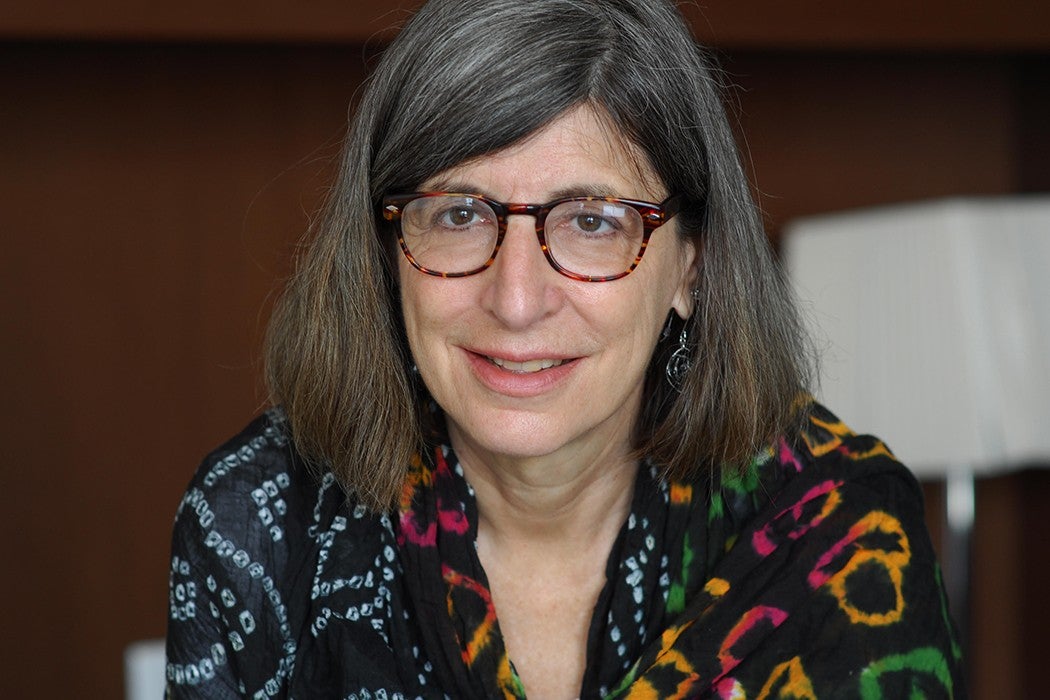Welcome to Ask a Professor, our new series that offers an insider’s view of life in academia. This month we interviewed Ruth Mazo Karras, Professor of History at the University of Minnesota.
Ruth Mazo Karras is an expert on gender and sexuality in medieval Europe. She’s written five books, edited three more, and published articles on topics ranging from early twelfth-century bohemian coinage to the regulation of brothels in later medieval England. Ruth has been honored as a “feminist foremother” by the Society for Medieval Feminist Scholarship and continues to write and publish today… all while supporting a serious knitting habit, as you’ll find out below!
Alex Golub: What’s a factoid/tidbit about your field that most people don’t know?
Ruth Mazo Karras: In most places in the Middle Ages, women could and did do a lot more than you might think from reading laws or the pronouncements of religious leaders. They owned and controlled property, ran businesses, participated in the education of their children, took an active role in the life of their church or synagogue (including producing devotional items and making charitable donations), and often read and owned books. Actually this is more than a tidbit—it’s a whole field of study—but it’s still something that most people don’t know.
Have you ever worked with someone in another field, and what was the nature of your collaboration together?
I’ve team-taught frequently with colleagues in literature, and have published with colleagues from literature and from Jewish Studies. In the humanities such collaboration often starts out with each colleague writing a different part of an article, and then editing to make them work together. When I worked with David Boyd on our article “The Interrogation of a Male Transvestite Prostitute in Fourteenth-Century London,” GLQ: A Journal of Lesbian and Gay Studies 1 (1994), 459-65, we wrote it sitting at the computer together and discussing each sentence. Not the most efficient, perhaps, but definitely the most completely collaborative.
What’s the next big thing in your field?
This is already underway but will go much farther: the extension of the study of the Middle Ages beyond Christian Europe, at least to encompass the whole Mediterranean region if not farther, including a variety of religious communities and the commercial and cultural (as well as military) contacts between them. A lot of early career scholars, and a few more senior ones, are now making the case that “the medieval world” must be studied as more culturally and ethnically diverse than has previously been imagined.
If you weren’t a professor what would you do and why?
Like many knitters I’ve always had a dream of a career in the fiber arts. This is completely unrealistic. Small retail businesses of any kind are extremely difficult to sustain, especially if the items you sell are light and thus easily sold online. I’ve designed a few of my own things but people who make a living as designers don’t spend all their time designing; a lot of it is spent marketing and teaching, and a lot of design ideas never go anywhere. I console myself that if it were something I had to do full time, I wouldn’t get the same joy out of it that I do as a hobby.
What’s on your bedside table?
A tenure dossier. Yan Lianke, The Four Books (contemporary novels in translation are one of my favorite genres to read, if you can call something that broad a genre); two issues of Speculum, the Journal of the Medieval Academy of America; one issue of Crochet magazine; one issue of The New Yorker; and two book proposals.







